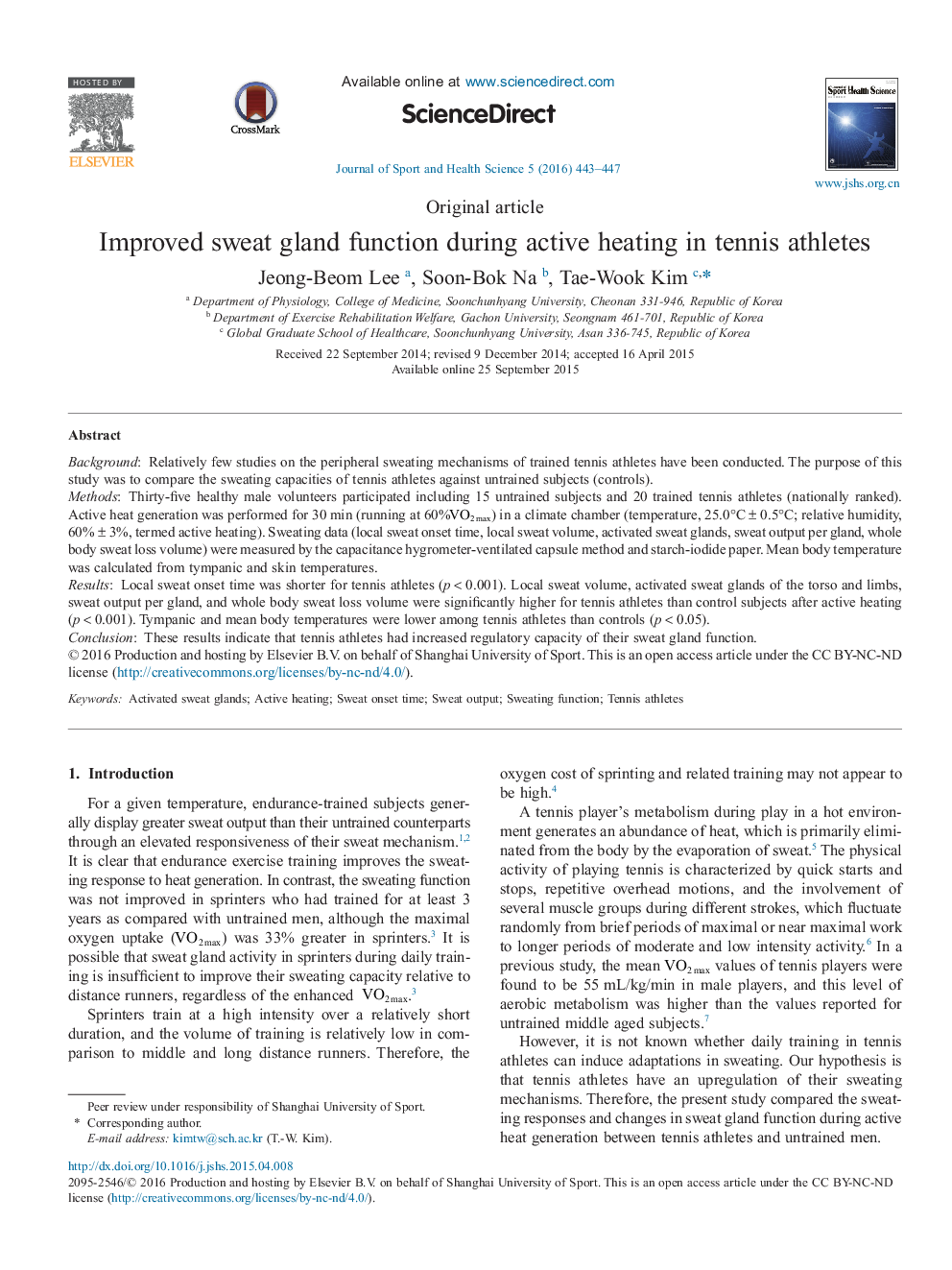| Article ID | Journal | Published Year | Pages | File Type |
|---|---|---|---|---|
| 5122140 | Journal of Sport and Health Science | 2016 | 5 Pages |
BackgroundRelatively few studies on the peripheral sweating mechanisms of trained tennis athletes have been conducted. The purpose of this study was to compare the sweating capacities of tennis athletes against untrained subjects (controls).MethodsThirty-five healthy male volunteers participated including 15 untrained subjects and 20 trained tennis athletes (nationally ranked). Active heat generation was performed for 30âmin (running at 60%VO2max) in a climate chamber (temperature, 25.0°Câ±â0.5°C; relative humidity, 60%â±â3%, termed active heating). Sweating data (local sweat onset time, local sweat volume, activated sweat glands, sweat output per gland, whole body sweat loss volume) were measured by the capacitance hygrometer-ventilated capsule method and starch-iodide paper. Mean body temperature was calculated from tympanic and skin temperatures.ResultsLocal sweat onset time was shorter for tennis athletes (pâ<0.001). Local sweat volume, activated sweat glands of the torso and limbs, sweat output per gland, and whole body sweat loss volume were significantly higher for tennis athletes than control subjects after active heating (pâ<0.001). Tympanic and mean body temperatures were lower among tennis athletes than controls (pâ<0.05).ConclusionThese results indicate that tennis athletes had increased regulatory capacity of their sweat gland function.
